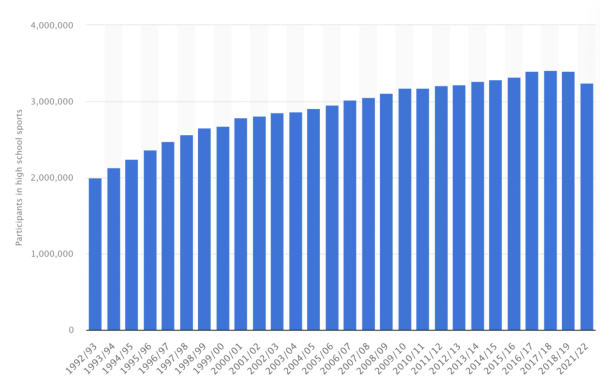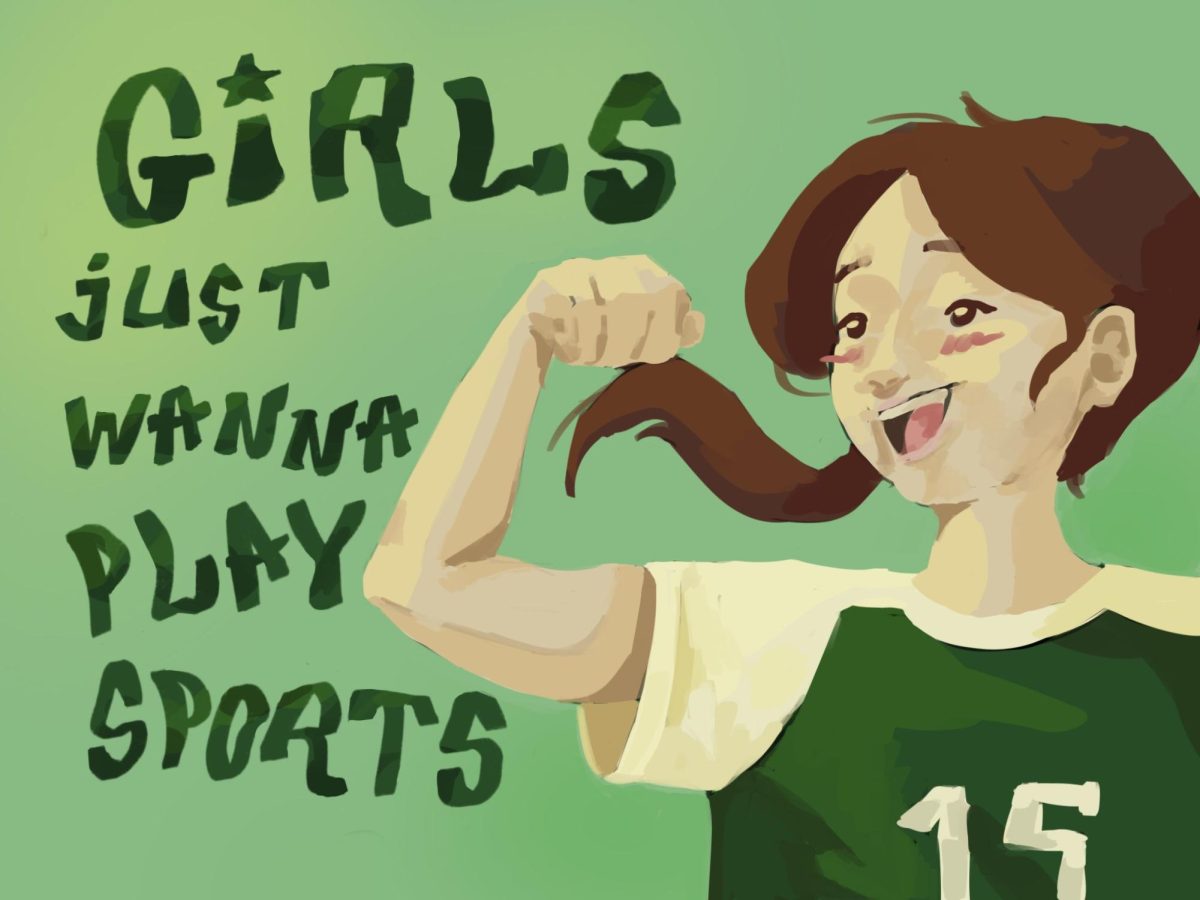On February 7, my social media feeds were flooded with posts celebrating National Girls and Women in Sports Day (NGWSD). As I looked back on our amazing accomplishments in sports over the past decades, I reflected on the ways in which Title IX completely transformed athletic opportunities for girls and women in America.
Passed in 1972, Title IX states, “No person in the United States shall, on the basis of sex, be excluded from participation in, be denied the benefits of, or be subjected to discrimination under any education program or activity receiving Federal financial assistance.” In other words, women must have equal opportunities as men to participate in activities like sports in federally funded institutions, including public schools.
Although I don’t think about Title IX regularly—even as a female athlete—I recognize that it has given me the chance to grow to love sports as much as I do. In 1971, less than 300,000 girls played sports at their high schools, leaving boys to make up around 99% of all athletes at high schools. Furthermore, only around 30,000 women advanced to play sports in college, according to a Title IX report and analysis carried out by The National Coalition for Women and Girls in Education.

Now, in the 2020s, more than 3.2 million girls are involved in high school sports, alongside 4.4 million boys participating in athletics, according to a 2022 study from the Statista Research Department. In regards to collegiate athletics, the National Collegiate Athletics Association (NCAA) reports that more than 225,000 women competed in its championship sports in 2021–22, an increase of almost 200,000 since 1971. Given an opportunity to play, the statistics reflect that girls and women are eager athletic competitors.
In 2022, America celebrated the 50th anniversary of Title IX, and one year later, Westridge hosted a panel of women athletes to talk about how the act changed their lives. Though Title IX makes less of an obvious impact on an independent, all-girls school like Westridge, it significantly affects athletics at the college level. For example, Director of Athletics Coach Melanie Horn was able to play Division I Basketball at the University of California, Los Angeles in part due to Title IX. During last year’s panel event, she said, “The decision to allow women to play competitive sports and support it through equity of opportunity and funding was a hard-fought battle in the early seventies…The trajectory of my life has been largely based on my ability as a woman to compete and coach both at the high school and collegiate level.”

I celebrate the progress we have made in encouraging girls to play sports since Title IX’s inception. I thank people like Billie Jean King, who did not have the legal protection of Title IX for persevering in her sport and achieving excellence. Moreover, her relentless advocacy for women in sports has not gone unnoticed by me, other female athletes, and even our changemakers.
I also think about people like Alex Morgan, who worked her way up to the United States Women’s National Team through her excellent play at the University of California, Berkeley (an opportunity she likely would not have had without Title IX). I think of Katie Ledecky, the greatest female swimmer of all time, who trained as a student-athlete at Stanford University, pushing her to unlock an even greater potential. I also think of female coaches like Valorie Kondos Field, who coached the University of California, Los Angeles’ women’s gymnastics program for more than two decades. I celebrate the athletic accomplishments of all women on National Girls and Women in Sports Day.
For one day a year, I feel that women’s athletics are equally valued, cherished, and supported. But, our positive attitudes towards women’s sports should not only be on this one day. We must support women in sports every day of the year. That means continuing to address areas of inequity and acknowledging disparities rather than ignoring them. Just as in a sport an athlete cannot sit back and hope to get better, we cannot sit back and hope to improve the status of women’s athletics; we need to work for change.
Even after 38 years of celebrating NGWSD, we still see girls quitting athletics at alarming rates compared to boys. “By age 14, many girls are dropping out of sports at two times the rate of boys,” according to more than 25 years of research from the Women’s Sports Foundation. The same foundation says prominent reasons why girls drop out are a general lack of access, social stigmas, and a lack of positive role models.
These issues are not impossible to overcome; we have the power to change them. This starts with ensuring girls with various opportunities to play sports, encouraging them to participate, and championing the thousands of female athletes around the world to redefine what excellence means as a woman playing a sport.
Happy National Girls and Women in Sports Day!




























![Dr. Zanita Kelly, Director of Lower and Middle School, pictured above, and the rest of Westridge Administration were instrumental to providing Westridge faculty and staff the support they needed after the Eaton fire. "[Teachers] are part of the community," said Dr. Kelly. "Just like our families and students."](https://westridgespyglass.org/wp-content/uploads/2025/03/dr.-kellyyy-1-e1748143600809.png)

































